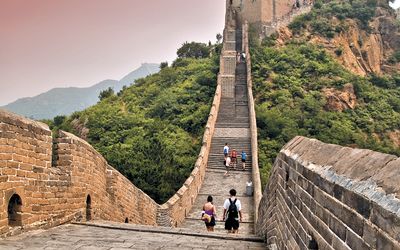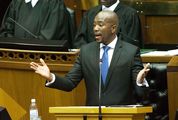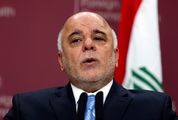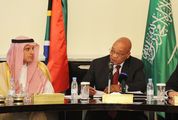MANILA — In recent months, China has sparred with the Philippines, Vietnam and Japan over its extravagant territorial claims in the South and East China Seas and the West Philippine Sea.
These conflicts have undermined regional security, impeded investment planning, and sparked an undeclared military contest between China and its regional counterweight, the US.
Indeed, US Vice-President Joe Biden recently made it clear the resources and attention that the US is allocating to the Asia-Pacific region are aimed primarily at enhancing security and stability. The US has, Biden declared, "set about … strengthening our alliances, deepening security partnerships, and investing like never before in regional institutions to help manage disputes peacefully".
America’s increasing involvement in Asia has already bolstered the efforts of the Association of Southeast Asian Nations (Asean) to move towards a full-fledged diplomatic and economic "community", akin in many ways to the European Economic Community that preceded the European Union.
The Asean Community, which Asean leaders hope to establish by 2015, would be a concert of nations, bound together by a shared commitment to sustainable development — that is outward-looking, resilient, peaceful, stable and prosperous.
Asean’s pursuit of deeper integration follows a global trend towards using regional groupings and partnerships to gain economies of scale and enlarge "home" markets. At the same time, it reflects growing anxiety, stemming largely from China’s increasingly aggressive posture towards many of its neighbours.
China appears determined to reshape the international security and economic system that the US built after the Second World War and has led ever since — a system that has long protected America’s Asian allies.
As China’s power grows, the US is finding it increasingly difficult to preserve a regional balance of power that is favourable to its interests. As a result, increased burden-sharing among Asia-Pacific countries is needed to confront shared threats like cross-border terrorism, pandemic diseases, climate change and environmental degradation, and trafficking of people, drugs, and weapons.
Fortunately, the region’s leaders seem to recognise this need. For example, defence spending is on the rise, even without cajoling from the US. India and Japan have recently launched new capital ships, and are deepening their military co-operation. The Philippines is renewing its old defence ties with the US, and deepening its nascent links with Japan.
But these pragmatic moves should not be viewed as evidence that Asia is on the verge of violent conflict. Despite their legitimate fear of military escalation in the South China Sea, Southeast Asia’s citizens remain optimistic that a peaceful, diplomatic resolution will be achieved, and that China will fulfil its commitment to forge a code of conduct for activities in Asean’s maritime heartland. The apparent inclination of China’s new leaders to work within a global rules-based system reinforces this hope.
Moreover, Asean’s pursuit of further integration is not rooted exclusively in concerns associated with China’s rise as a regional and global power. Longstanding threats to internal stability — including deep economic inequality, ethnic and religious conflict, and, in some cases, demands for territorial autonomy — remain acute. But, just as the wealth created by European integration helped to reconcile historic divisions, such as those that once roiled Northern Ireland, a genuine economic community in Southeast Asia can provide the dynamism needed to address deep-rooted domestic disputes effectively.
Indonesia — the largest of the 10 Asean countries, with a population of 250-million — has assumed a leadership role in setting security landmarks on the road towards the Asean Community. Indonesia has also proposed an Asean peacekeeping centres network and a regional peacekeeping force — institutions the region urgently needs and which, despite the difficulty of multilateral security co-operation, are within Asean’s capacity to establish.
But success will depend on whether Asean countries implement crucial reforms. In order to stimulate gross domestic product (GDP) growth, encourage the establishment of competitive and dynamic enterprises, facilitate larger trade flows, and create more jobs, they must dismantle barriers that raise costs, inhibit competition and deter new investment.
Throughout this process, Asean’s leaders must bear in mind a crucial lesson of the EU: high-level agreements that lack the consent of ordinary people have limited effectiveness and longevity. Citizens — Asean’s most important stakeholders — must regard the bloc’s mission as their own. Thus, in order to build public support for the Asean Community, policy makers must ensure it genuinely improves people’s lives by delivering more effective healthcare systems, improved housing, better education and greater access to decent, higher-wage jobs.
Furthermore, Asean leaders must build durable institutions that represent both the particular interests of individual member countries and the larger interests of the community as a whole. As it stands, Asean has no mechanism to expedite decision-making in crisis situations or, more important, to enforce compliance with collective decisions — a deficiency highlighted by disputes over the proposed code of conduct for the South China Sea.
The Asean Secretariat, for example, lacks the authority and resources to perform crucial functions, including formulating policies, co-ordinating implementation, monitoring compliance and settling disputes. As a result, Asean, as a McKinsey study argued, effectively "grants a veto to any country that resists regional economic integration".
While US efforts to enhance stability in the Asia-Pacific region are welcome, they are inadequate to offset rising strategic and economic uncertainty. Only by building a more unified, dynamic community can Asean leaders secure a more prosperous, stable and sustainable future for their citizens.
• Ramos, a former president of the Philippines (1992-98), is a member of the Asean Eminent Persons Group that provided the concepts and guidelines for drafting the Asean Charter.
© Project Syndicate, 2013

TESTING THE LIMITS: As China’s power grows, the US is finding it hard to preserve a regional balance of power favourable to its interests.
MANILA — In recent months, China has sparred with the Philippines, Vietnam and Japan over its extravagant territorial claims in the South and East China Seas and the West Philippine Sea.
These conflicts have undermined regional security, impeded investment planning, and sparked an undeclared military contest between China and its regional counterweight, the US.
Indeed, US Vice-President Joe Biden recently made it clear the resources and attention that the US is allocating to the Asia-Pacific region are aimed primarily at enhancing security and stability. The US has, Biden declared, "set about … strengthening our alliances, deepening security partnerships, and investing like never before in regional institutions to help manage disputes peacefully".
America’s increasing involvement in Asia has already bolstered the efforts of the Association of Southeast Asian Nations (Asean) to move towards a full-fledged diplomatic and economic "community", akin in many ways to the European Economic Community that preceded the European Union.
The Asean Community, which Asean leaders hope to establish by 2015, would be a concert of nations, bound together by a shared commitment to sustainable development — that is outward-looking, resilient, peaceful, stable and prosperous.
Asean’s pursuit of deeper integration follows a global trend towards using regional groupings and partnerships to gain economies of scale and enlarge "home" markets. At the same time, it reflects growing anxiety, stemming largely from China’s increasingly aggressive posture towards many of its neighbours.
China appears determined to reshape the international security and economic system that the US built after the Second World War and has led ever since — a system that has long protected America’s Asian allies.
As China’s power grows, the US is finding it increasingly difficult to preserve a regional balance of power that is favourable to its interests. As a result, increased burden-sharing among Asia-Pacific countries is needed to confront shared threats like cross-border terrorism, pandemic diseases, climate change and environmental degradation, and trafficking of people, drugs, and weapons.
Fortunately, the region’s leaders seem to recognise this need. For example, defence spending is on the rise, even without cajoling from the US. India and Japan have recently launched new capital ships, and are deepening their military co-operation. The Philippines is renewing its old defence ties with the US, and deepening its nascent links with Japan.
But these pragmatic moves should not be viewed as evidence that Asia is on the verge of violent conflict. Despite their legitimate fear of military escalation in the South China Sea, Southeast Asia’s citizens remain optimistic that a peaceful, diplomatic resolution will be achieved, and that China will fulfil its commitment to forge a code of conduct for activities in Asean’s maritime heartland. The apparent inclination of China’s new leaders to work within a global rules-based system reinforces this hope.
Moreover, Asean’s pursuit of further integration is not rooted exclusively in concerns associated with China’s rise as a regional and global power. Longstanding threats to internal stability — including deep economic inequality, ethnic and religious conflict, and, in some cases, demands for territorial autonomy — remain acute. But, just as the wealth created by European integration helped to reconcile historic divisions, such as those that once roiled Northern Ireland, a genuine economic community in Southeast Asia can provide the dynamism needed to address deep-rooted domestic disputes effectively.
Indonesia — the largest of the 10 Asean countries, with a population of 250-million — has assumed a leadership role in setting security landmarks on the road towards the Asean Community. Indonesia has also proposed an Asean peacekeeping centres network and a regional peacekeeping force — institutions the region urgently needs and which, despite the difficulty of multilateral security co-operation, are within Asean’s capacity to establish.
But success will depend on whether Asean countries implement crucial reforms. In order to stimulate gross domestic product (GDP) growth, encourage the establishment of competitive and dynamic enterprises, facilitate larger trade flows, and create more jobs, they must dismantle barriers that raise costs, inhibit competition and deter new investment.
Throughout this process, Asean’s leaders must bear in mind a crucial lesson of the EU: high-level agreements that lack the consent of ordinary people have limited effectiveness and longevity. Citizens — Asean’s most important stakeholders — must regard the bloc’s mission as their own. Thus, in order to build public support for the Asean Community, policy makers must ensure it genuinely improves people’s lives by delivering more effective healthcare systems, improved housing, better education and greater access to decent, higher-wage jobs.
Furthermore, Asean leaders must build durable institutions that represent both the particular interests of individual member countries and the larger interests of the community as a whole. As it stands, Asean has no mechanism to expedite decision-making in crisis situations or, more important, to enforce compliance with collective decisions — a deficiency highlighted by disputes over the proposed code of conduct for the South China Sea.
The Asean Secretariat, for example, lacks the authority and resources to perform crucial functions, including formulating policies, co-ordinating implementation, monitoring compliance and settling disputes. As a result, Asean, as a McKinsey study argued, effectively "grants a veto to any country that resists regional economic integration".
While US efforts to enhance stability in the Asia-Pacific region are welcome, they are inadequate to offset rising strategic and economic uncertainty. Only by building a more unified, dynamic community can Asean leaders secure a more prosperous, stable and sustainable future for their citizens.
• Ramos, a former president of the Philippines (1992-98), is a member of the Asean Eminent Persons Group that provided the concepts and guidelines for drafting the Asean Charter.
© Project Syndicate, 2013






















Change: -0.47%
Change: -0.57%
Change: -1.76%
Change: -0.34%
Change: 0.02%
Data supplied by Profile Data
Change: -1.49%
Change: 0.07%
Change: -0.47%
Change: 0.00%
Change: 0.04%
Data supplied by Profile Data
Change: 0.43%
Change: 1.16%
Change: 0.65%
Change: 0.15%
Change: 1.17%
Data supplied by Profile Data
Change: 0.02%
Change: -0.63%
Change: 0.00%
Change: -1.22%
Change: -0.87%
Data supplied by Profile Data